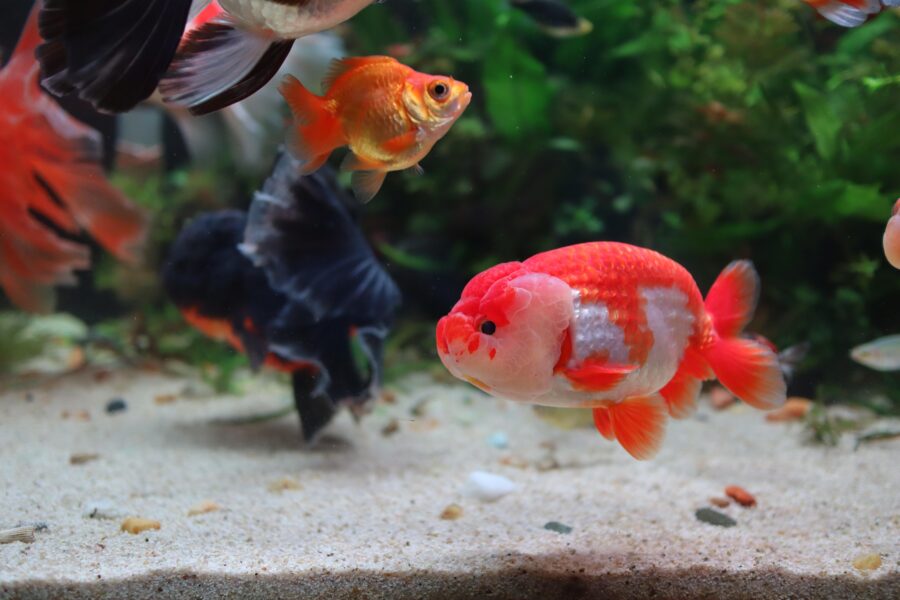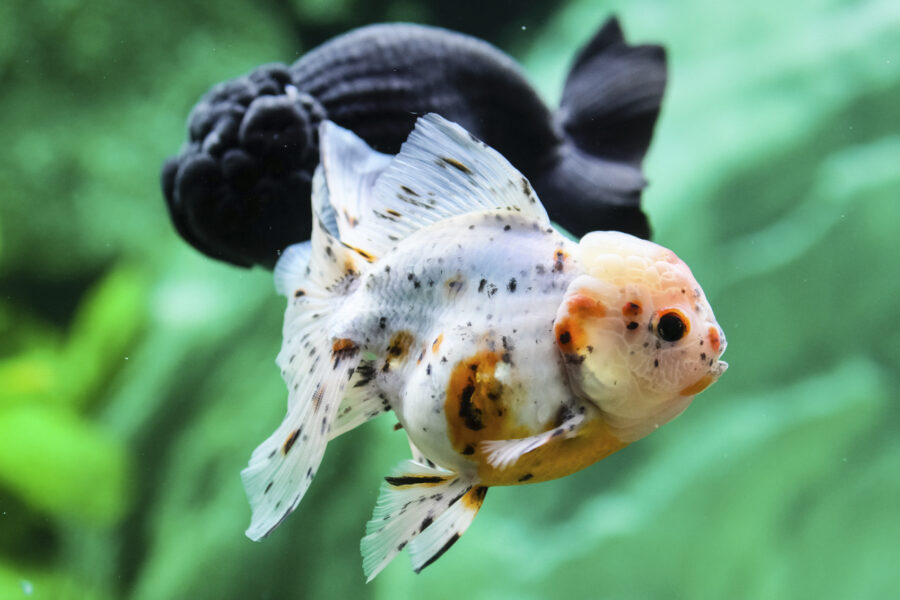
Ever wondered if your goldfish is just being quirky or if it’s crying out for help in fish language? In our simple guide, we help you understand goldfish behavior and differentiate between your pet’s amusing antics and distress signals.
From bacterial and parasitic nuisances to viral and fungal foes, we dive into the most common health threats your aquatic pal may encounter. But don’t worry, we’ll also cover ways to keep the diseases at bay and even treat them. Now, let’s swim into the pool of knowledge and get you from flustered to fin-savvy faster than a goldfish can chow down a food pellet!
Understanding Goldfish Health
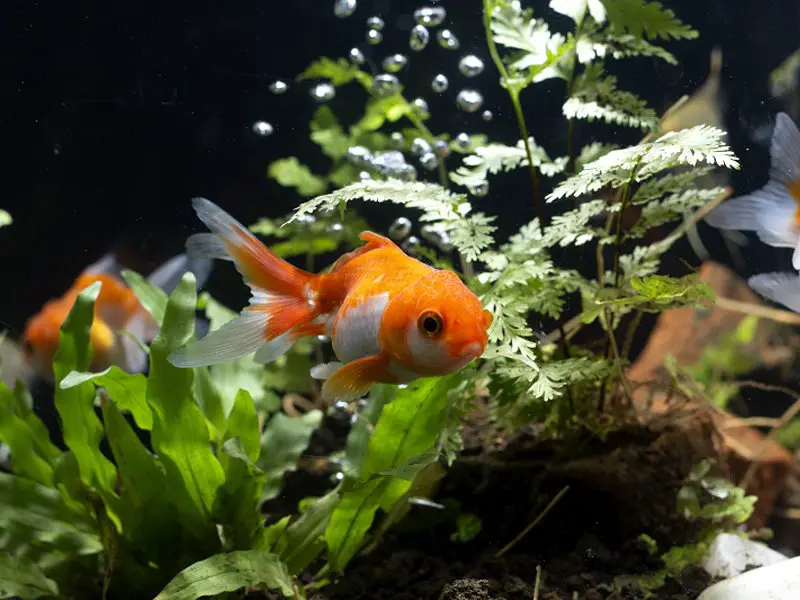
Say hello to the world of goldfish! These tiny, vibrant pets add a touch of magic to any living space. But like any other pet, they require attention to their health. To ensure they’re swimming well into their golden years, we need to understand their normal behavior as well as potential signs of illness.
Healthy Goldfish Behavior
Goldfish often behave like celebrities, always on the move and forever ready for a photo op. You might see them swimming around happily, showing off their glittering, gold bodies. They eat heartily and have a general zest for life. They even interact with their fellow tank dwellers, just like at a celeb party. So, acting social, vigorous swimming, and good appetites are signs your goldfish is in good health. Also, remember, just like an A-lister, their scales should be shining bright.
Signs and Symptoms of a Sick Goldfish
Unfortunately, goldfish don’t come equipped with language skills. If they did, we’d be in for an earful! “Clean my tank, human!” they’d say. But alas, since they can’t communicate verbally, we need to look out for physical signs. Sluggish swimming, loss of appetite, unusual spots or markings, changes in color, fins clamped close to their body, or lurking at the bottom of the tank are all red flags. Don’t ignore these signs; it could mean your little star is in distress.
Whew! That was a hefty dose of fish facts, wasn’t it? Now let’s dive deeper. In the next section, we’ll discuss some bacterial diseases your goldfish may encounter. It’s like a VIP backstage tour into the world of goldfish health issues. Don’t worry, we’ve got this, so let’s keep swimming on!
Bacterial Infections: The Uninvited Guests
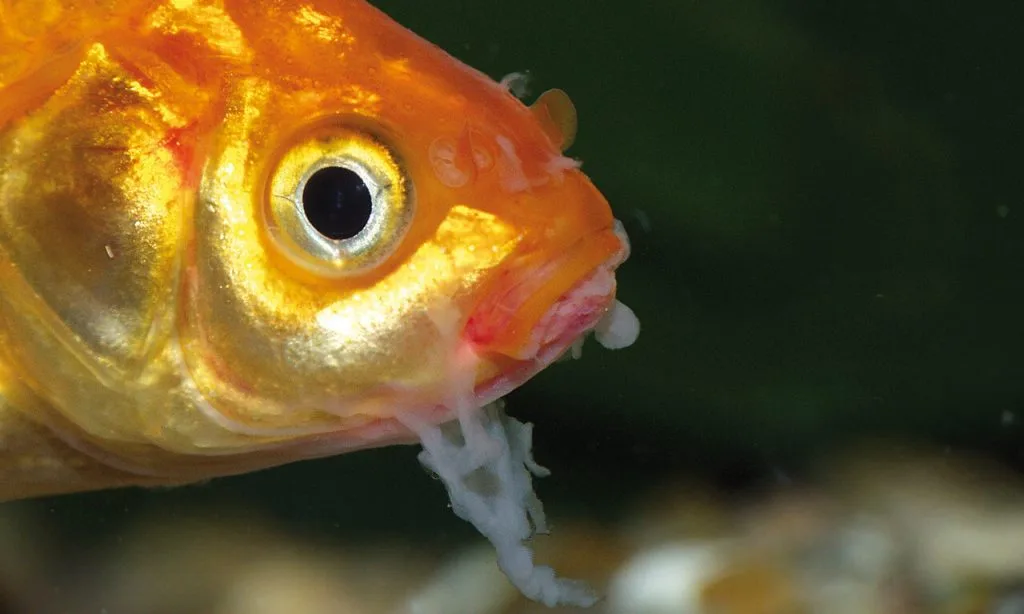
In the pool party of our golden wonders, certain uninvited guests can crash the show. Mostly, they are pesky bacteria causing various infections. Let’s fish out a few of the common ones.
Fin Rot/Tail Rot
Ever notice your goldfish’s fins looking a bit tattered, like it’s been through a paper shredder? Well, they might be dealing with fin rot. It’s a smelly business, literally because it’s a bacterial infection that can add a certain pungency to your aquarium. It’s mostly caused by poor water conditions. But don’t panic, treatments like antibiotics and better water management can turn the tide in your goldfish’s favor.
If you’re keen to understand more about this condition and how to treat it, read our comprehensive guide, Understanding and Treating Goldfish Fin and Tail Rot. It covers everything you need to know about the causes, symptoms, prevention, and treatment of fin and tail rot in goldfish.
Mouth Fungus
Let’s face it, mouth fungus sounds as bad as it looks! Also known as cotton mouth disease, it turns your fish’s mouth into a fluffy white spectacle. But it’s not actual fungus, it’s a bacterial situation, usually caused by sources like overcrowded tanks. Further tank care, medicine, and a potential vet visit can help wipe this fluffy madness away.
For more information on how to deal with this unsightly condition and keep your goldfish healthy, check out our in-depth guide, Fighting Fungus in Goldfish to Maintain Their Health. It provides insights and tips for managing and preventing this issue, ensuring your fish stay happy and healthy.
Dropsy
Nope, Dropsy isn’t the latest Pop sensation. It’s a bacterial infection that allows your goldfish to balloon up, often due to kidney failure. A high-salt diet is usually the culprit here. Combat Dropsy with isolating your fish, feeding it fresh greens, and adding antibiotic treatments to its diet.
If you’re looking for a comprehensive breakdown of this condition, how to diagnose it, and how to treat it, check out our article, Dropsy in Goldfish: Decoding the Bloating. It’s a must-read if you’re dealing with this issue or want to learn more about preventing it.
Fish Tuberculosis
Fish tuberculosis sounds scary because it is! Affecting mainly the liver, this disease can even be passed onto human handlers causing small sore points. Sadly, there’s no cure for this bug in goldfish; prevention is the only cure. So maintain top-notch water quality and hygiene to shoo this specter away!
Ulcers
Ever had a pimple that just wouldn’t go away? Imagine being a goldfish and getting an ulcer! It’s like a pimple but on a fishy scale. And the worst part is, they can’t even pop it! Ulcers are those red, unsightly sores that appear on our finned friends. Often caused by bacteria or poor living conditions, ulcers are a goldfish’s way of saying, ‘Hey, I need a cleaner tank!’ or ‘Excuse me, can I get a roomier bowl?’. But don’t worry, with some clean water, proper care, and maybe a little fishy spa treatment, your goldfish can go back to being the belle of the bowl in no time.
Flexibacter Columnaris Disease
Ah, the dreaded ‘Cotton Wool Disease.’ No, it’s not a cozy sweater for your goldfish, but an actual fishy ailment! Flexibacter Columnaris Disease makes your goldfish look like it’s been swimming through a cotton candy machine. It’s a bacterial infection that gives our fish friends a fuzzy, white appearance. Not the fashion statement they were hoping for, believe me! It’s usually caused by poor water conditions or a weakened immune system, but hey, who hasn’t had a bad hair day? Just clean up their tank, keep their water pristine, and soon your goldfish will be back to its sleek, shiny self – no fuzz attached!
Okay, so we’ve given a rundown on bacteria town. Next up in our disease roster are the parasites. Yeah, you heard it right, we’re about to swim into the world of parasitic infections. Don’t worry, I’ll be there with you, every step of the way. Let’s dive in, shall we?
Parasitic Infections in Goldfish

Oh dear! While bacterial infections are a giant nuisance, don’t celebrate just yet! We still need to discuss another minuscule menace – parasites! These tiny pests can cause an array of issues for your finned friend, from the itchy white spots of Ich to the gill munching flukes. So let’s dive right in!
Ich (White Spot Disease)
Think your fish is mourning its clean scales with a new dalmatian look? You might be dealing with Ich, or White Spot Disease. Small white spots covering the body? Check. Goldfish acting like it’s in an underwater disco, swaying and shaking? Check. The culprit could be the parasite, Ichthyophthirius multifiliis. Treatment involves raising water temperature and anti-parasitic medications. Good news, Ich is treatable. Phew!
To learn more about this common parasitic infection and how to handle it, take a look at our article, Ich (Whitespot) in Goldfish: A Common Parasitic Infection. It will give you a deeper understanding of this condition and its effective treatment.
Velvet Disease
Goldfish looking a bit too glowy under the light? Not a sudden case of birthday glow, rather a sneaky parasite known as velvet. This pest, in fact, leaves a dusty, gold film on the fish and may cause rapid breathing. Maintain good water quality and proper temperatures in combination with specific medication to bid farewell to Velvet.
For a more detailed look at this pesky parasite and how to fight it off, check out our article, Goldfish under Siege by the Velvet Parasite. It offers insights into the causes, symptoms, and treatment of velvet disease, helping you keep your goldfish safe and healthy.
Gill Flukes
Imagine having someone constantly pinch at your gills! Gill Flukes, tiny parasites, attach themselves to the gills causing irritation and difficulty in breathing. Often, anti-parasitic medication will help get rid of these irritating intruders.
For a more in-depth look at this issue and how to combat it, read our article, The Hidden Peril of Flukes in Goldfish. It provides an extensive overview of gill flukes, their effects, and how to treat and prevent them, helping you ensure your goldfish breathe easy.
Anchor Worms
Visible worms sticking out from the fish like misplaced decorations? Friends, we have an Anchor Worm invasion. These parasites resemble tiny threads and latch onto the body, causing wounds and potential bacterial infections. Pulling out the worms (gently!) and applying medication normally resolves this situation.
Trichodina
Trichodina is that uninvited guest that crashes the fish tank party and refuses to leave. These tiny parasites cling onto your goldfish like confetti, causing irritation and discomfort. Think of it as a fishy version of having glitter stuck to your skin after a party – it looks flashy, but it’s oh-so-annoying! By keeping your goldfish’s tank spick and span, you can give Trichodina the boot and turn the fiesta back into a tranquil fish haven.
Fish Lice (Argulus)
Fish lice, or as we like to call them, the fish world’s fashion faux pas. These little critters attach themselves to your goldfish and start munching away, making your fish’s scales look like a patchwork quilt. It’s like showing up to a red carpet event in mismatched socks! To help your goldfish look and feel fabulous, all you need to do is keep their home clean, treat with the right medications, and those fish lice will be history.
Costia
Costia is the fishy version of a bad hair day that lasts forever. These microscopic parasites can cause your goldfish to look scruffy, sluggish, and just downright miserable. Imagine going to a party with bedhead and not being able to fix it – that’s how your goldfish feels! But don’t worry, with some proper care, clean water, and maybe a little fishy spa day, your goldfish will be back to its glamorous self in no time.
Chilodonella
Chilodonella sounds like a fancy Italian pasta dish, but trust me, your goldfish isn’t a fan. These parasites can make your fish’s skin look cloudy, like they’ve just had a run-in with a flour truck. Not the best look for a fish about town. But, there’s a silver lining – with proper water quality and a bit of anti-parasite treatment, your goldfish will be back to its crystal-clear self, ready to dazzle the tank once more!
Voila! You are now aware of these underwater pests. But don’t despair, or worse, start draining your tank! Up next, we’ll be tackling the intriguing world of viral infections in goldfish. One can never know too much, right?
Viral Infections in Goldfish
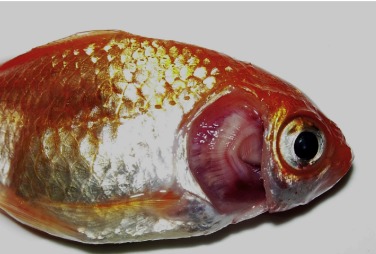
Swimming into our next feature of a goldfish’s health hurdle are the viral infections. Most goldfish parents fear these viral villains for their ability to lead a goldfish’s immune system into a dangerous dance of destruction.
Carp Pox Virus
Contrary to its name, society’s notorious ‘herpes’ isn’t a goldfish’s teenage mistake but quite a serious condition. Koi Herpes Virus, or KHV, is a highly contagious virus causing severe gill damage and a high mortality rate. If your goldfish develops rapid breathing, loss of appetite, or becomes unusually lethargic, it may be dancing with KHV. Consult a fish vet for immediate intervention and be ready to quarantine your ill-fated fishy friend.
For further information on viral infections that can affect goldfish, including another condition commonly called Carp Pox Virus, check out our article, Unraveling the Mystery of Carp Pox Virus in Goldfish. It provides a detailed look at the virus, its symptoms, and treatment options. This will help you keep your fish swimming happily and healthily.
Spring Viremia
On a leap to our next viral villain, meet the unwelcome guest of the spring months – Spring Viremia. If your goldfish is showing swollen eyes, and has a sudden flair for pine-cone fashion (a.k.a. raised scales), it might have caught Spring Viremia. This virus also causes internal bleeding and liver damage. Reminder: Take your sick goldfish to your trusty vet. Worried about your goldfish jumping into the viral pit? Next, we’ll venture into fungal infections that can also harm your aquatic amigo.
Lymphocystis
Oh, Lymphocystis, you’re like the fish version of acne – nobody invited you, but you show up anyway. This viral infection causes your goldfish to sport unsightly lumps and bumps. It’s like they’re going through fish puberty with all those awkward growths! But don’t despair, just like teenage acne, Lymphocystis will eventually go away on its own. In the meantime, keep their water clean and their stress levels low – think of it as a spa retreat for your spotty fishy friend. Soon enough, your goldfish will be back to its smooth, scale-tastic self!
Remember, the world of goldfish health can be as vast and deep as the ocean. But fear not, dear goldfish parents! Armed with knowledge and gentle care, we can navigate these troubled waters, knowing help is just a vet visit away.
Fungal Infections in Goldfish
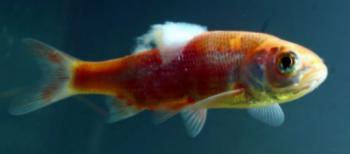
Next stop on our goldfish health blues train – Fungal infections! Like a bad sci-fi movie, fungi can be a real threat in your little buddy’s life. But hey, no need to panic! Let’s dive into one of the most common fungal issues – the Body and Gill Fungus.
Body & Gill Fungus
Tired of all the bacteria and parasites? Meet fungus – the uninvited third wheel. Body and gill fungus, scientifically known as Saprolegnia, looks like cottony growths on your fish’s skin or gills. It’s often white or light gray, making your goldfish look like it’s donning a fuzzy, moldy coat. Now that’s a fashion disaster!
So, what causes this fuzzy mess? Typically, it’s poor water quality or injury. Ever felt bad in a smoky, dirty room? That’s how your goldfish feels in poor water conditions. Damaged skin or gills can also make your fish an easy target for these fungi. See a trend here? Yep, water quality is king – a very, very important king.
Treatment usually involves anti-fungal medications, good water management, and lots of love. Just remember, you’re your goldfish’s knight in shining armor – Time to wrestle that fungus to the ground!
Next up, let’s swim over to the dark side of goldfish diseases – the mostly silent, non-infectious ones. They may seem less threatening compared to our bacterial and fungal villains, but trust me, they pack their own punch.
Non-Infectious Diseases in Goldfish

Your goldfish just pulled a hammy. Not quite, but close enough. Let’s talk about diseases that are not caused by bacteria, viruses, or parasites. Unlike other diseases, these don’t jump from fish to fish like dolphins in a laser show. They’re quirky situations that just happen out of the blue.
Swim Bladder Disease
Let’s dive right in with, well, diving. Sometimes goldfish start sinking or floating when they shouldn’t, like balloons at the wrong party. This weird behavior can be chalked up to Swim Bladder Disease. It’s like the goldfish’s internal GPS just got drunk and it affects their buoyancy. But don’t worry, it’s treatable with special food and medications.
For a deeper understanding of this issue and how to handle it, check out our article, Swim Bladder Disorder in Goldfish: Don’t Panic, Here’s What to Do. It provides detailed information about swim bladder disease, its causes, symptoms, and treatment options, helping you ensure your goldfish stays on the right track.
Nutritional Disease
Goldfish aren’t picky eaters. However, just because they’ll eat just about anything doesn’t mean they should. Much like a child who’d happily survive on a diet of chicken nuggets, goldfish can develop health issues if they’re not fed a balanced diet. Nutritional diseases in goldfish can manifest in a variety of ways, including wonky fins and off-kilter coloring. This is why we don’t simply toss a piece of bread into the tank for our beloved “Bubbles” and hope for the best. Instead, a carefully considered, balanced diet is what will keep them glowing like a bright orange sun.
For those eager to dive deeper into the best dietary options for your aquatic friend, we’ve curated a few resources. Check out Discover the Best Foods for Your Goldfish, 5 Best Diet Foods for Your Goldfish, and The Best Frozen Foods for Goldfish Nutrition to ensure that “Bubbles” gets the nutrition they deserve.
Water Quality-Related Diseases
Important PSA: Keeping your goldfish in vodka is not cool, they like water. Clean, good quality water. In fact, water-related diseases could be summed up as “dirty home syndrome”. If your goldfish could talk, they would definitely nag about the tidiness of their tanks.
Remember, folks: clean tanks mean healthy fish!
Hole-in-the-Head Disease
Hole-in-the-Head Disease – no, it’s not a condition that affects forgetful goldfish! It’s actually a rather unfortunate ailment that causes small holes to appear on a fish’s head. Think of it as the fish equivalent of having donut sprinkles on your face. Caused by poor water quality and lack of essential nutrients, it’s as if your goldfish is saying, ‘Hey, how about some vitamins over here?’. So, let’s get that water clean, add some nutritious food to their diet, and turn those holey heads into whole, happy fish!
Tumors
Tumors in goldfish, or as we like to call them, ‘Fishy Bumps,’ can be a real party pooper. It’s like showing up to a pool party with a beach ball stuck to your side – not the look you were going for! These lumpy growths can be caused by a variety of factors, and your goldfish probably feels as awkward about them as you would about that beach ball. Fear not, though! With proper care and a visit to the fish vet, your goldfish can be back to its sleek, streamlined self, ready to swim the catwalk once more.
But what if things go south? Can my goldfish become the James Bond of diseases and survive? Next up, we’ll walk you through the world of treating these troublesome ailments. It’s not as hard as herding cats, I promise!
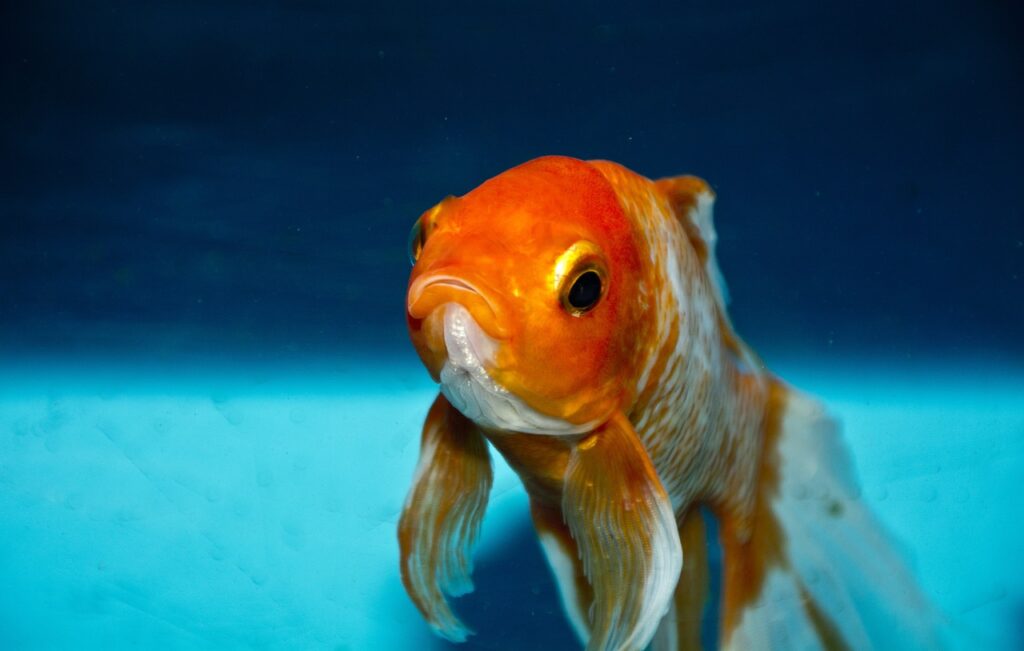
No one wants to see their scaly pals fall sick, right? And the adage, “Prevention is better than cure” rings just as true in the fishbowl. So, buckle up! We’re embarking on a bubbling adventure to learn how to keep our golden cuties in shipshape and bristol fashion.
Feeding Goldfish Properly
Just as we’re tempted to binge on Netflix, it’s equally tempting to overfeed our little aquatic friends. But here’s the thing: overfeeding is the pet equivalent of Netflix binging—it might feel great at the moment, but it’s not good in the long run. Excessive food doesn’t just make your goldfish rounder; their unmetabolized food can lead to water pollution. And before you know it, boom! We’ve got a sick fish on our hands. To keep your goldfish healthy and the water pristine, it’s essential to strike the right balance. Feed ’em just enough, and we’ll be golden (pun intended).
If you’re concerned about overfeeding, or simply want more tips to get it just right, check out our article on Strategies to Prevent Overfeeding Your Goldfish. It’s packed with useful advice to keep your fishy friend in top shape!
Maintaining Water Quality
The equation is simple: clean water equals happier, healthier fish. To achieve this, you’ll want to maintain a balanced pH, steer clear of overcrowding, and consider incorporating bi-weekly water changes. Think of it as giving your goldfish their own spa day. Just as we appreciate a little pampering now and then, so do our scaly friends. Yes, your goldfish truly deserve that R&R!
Curious about how much room your goldfish needs to avoid overcrowding? Dive into our article on How Much Tank Space Do Goldfish Need? or The Right Tank Size for Your Goldfish to ensure their aquatic home is just right.
Handling and Introducing New Fish
Acclimatization, folks, is key. Don’t just toss new buddies into the tank. Temperatures could clash worse than that telenovela love triangle. A slow introduction process will make it less stressful. Pretty much like your first slow dance at prom, remember? Makes it all a tad less nerve-wracking.
We’ve touched on preventive measures so far, tacking diet, habitats, and introducing new fish. Next, we’ll dive into the treatment tactics of goldfish diseases. Just in case the prevention fell short, or your fish just had a classic case of being in the wrong place at the wrong time, we’ve got you covered. So, stay with us!
Treating Goldfish Diseases
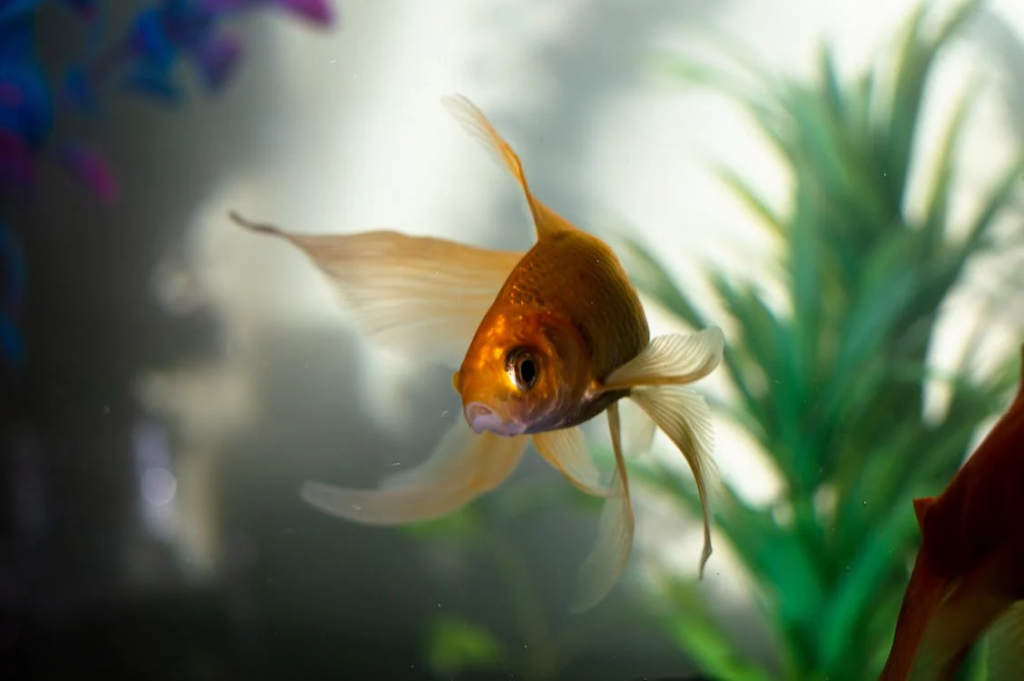
If you’ve spotted some fishy (pun intended) behavior, there’s no time to question. It’s essential to treat your goldfish effectively. In this section, we’ll talk about common treatments and when to swim to a vet’s office.
Common Treatments
Don’t be daunted. Many common goldfish diseases can be treated at home, like a pet-parent pro. The first port of call? Water. Ensuring a clean and healthy environment can help your fish fight off disease. Treatments can be as simple as adding medicine in the water.
Other treatments include salt baths (not your fancy Himalayan kind, sorry fish!), which can be incredibly effective against skin parasites. In some cases, antibiotics are inevitable, but always ensure you’ve got a proper diagnosis before going down this road.
Consulting a Vet
And what if the road gets rougher? Now, it might be time to consult a vet. Even though they might not be the regular dog or cat, they still deserve the care. Vets can confirm your amateur diagnosis and prescribe specific treatments, including antibiotics.
Remember, some cases need professional intervention. When DIY treatments aren’t working, don’t hesitate. Better safe than sorry, as they say. It’s also important to discuss any treatments you’ve already tried, as some medications can interfere with others.
Our prickly little friends are surprisingly robust, but keeping watch (not 24/7, don’t worry) over them can prevent any lurking disease from becoming a disaster. And no matter what, remember every journey starts with the first swim, or in our case, a little flip.
To Sum Up
In summary, understanding the behavior and health of our goldfish is paramount for early disease detection. Identifying signs of discomfort or abnormality often provide the first clues to ailments that could range from bacterial, parasitic, viral to fungal infections. Not forgetting non-infectious diseases brought about by nutritional deficiencies or poor water quality.
Therefore, prevention strategies should be our top priority. Feeding properly, maintaining the right water conditions, and careful handling when introducing new fish can significantly halt disease progression. Moreover, should our finned friends fall ill, common treatments are available while professional help from a vet could sometimes be crucial. Remember, a healthy goldfish is a happy goldfish, and a happy goldfish equals a happier you!

